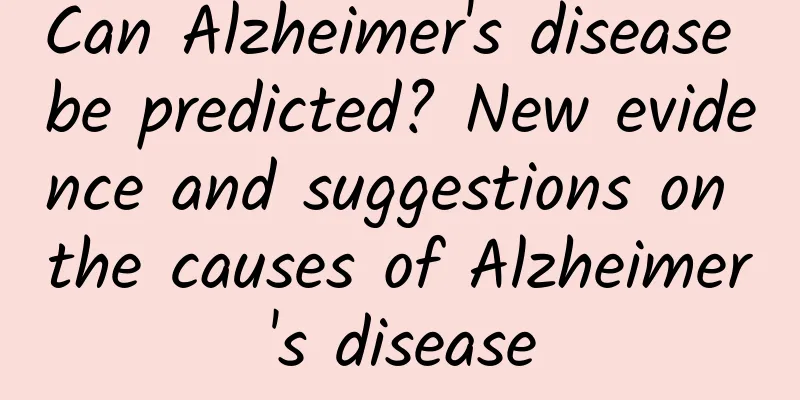The child has already committed self-harm, why do some parents still think that "he is pretending"?

|
A pair of parents came with their child to the psychological clinic... The parents said firmly: "Doctor, the child cut his hand at home and said he didn't want to live. I think he just didn't want to go to school and wanted to play with his phone. In fact, the child is just lazy and always plays with his phone. As long as we return the phone to the child, his mood will be better." During the consultation, the child sometimes kept silent and sometimes cried silently. In a hurry, he would shout: "I am not happy playing with my phone. I just don't want to go to school. I feel that life is meaningless!" Copyright images in the gallery. Reprinting and using them may lead to copyright disputes. Is the child threatening the parent? When children engage in self-harm and say things like “I don’t want to live anymore,” they are not simply threatening their parents or seeking attention. Rather, it is a signal for help. They may be experiencing severe emotional distress or stress. Every suicide is a tragic event, especially when the deceased is a child. It is not only the relatives and friends of the deceased who feel heartbroken and sad, but also the general public. Therefore, preventing child suicide is not only extremely important for families, but also one of the issues that society must prioritize. Understanding Suicide: Why Do We Have Suicidal Thoughts? According to statistics from the World Health Organization (WHO), more than 700,000 people die from suicide every year (one person commits suicide every 40 seconds). In 2016, the number of deaths from suicide worldwide reached 817,000, and suicide was the fourth leading cause of death among people aged 15 to 29. The detection rate of non-suicidal self-injury (NSSI) among Chinese adolescents is as high as 25%, with girls slightly higher than boys. The "China National Mental Health Development Report (2021-2022)" shows that in China, 14.8% of adolescents have varying degrees of depression risk, of which 4.0% belong to the severe depression risk group. Regardless of the problem, the feelings and thoughts of suicidal people are often similar. Feeling: sad, upset, lonely, helpless, hopeless, and worthless. Thoughts: “I wish I could die,” “I can’t do anything,” “I can’t take this anymore,” “I’m a loser,” “I’m a burden,” “Others would be happier without me”… Myths and truths about suicide Myth 1. Kids who talk about suicide are just making threats or seeking attention The truth: When children talk about suicide, they may be sending a signal for help, and we should take it seriously. Myth 2: Talking about suicide triggers suicidal behavior Fact: The right conversations can help someone with suicidal tendencies reduce anxiety and provide them with more options. Myth 3. Suicide only happens to certain groups of people and children don’t commit suicide. Fact: People of any age can be at risk for suicide, especially when facing stress. Myth 4. Suicide usually happens suddenly and without warning Fact: Before committing suicide, people usually experience obvious changes in mood and behavior. Myth 5: Suicide is a personal choice and cannot be prevented Fact: Suicide can be effectively prevented through a variety of measures, such as limiting the access to means of suicide, responsible media reporting, developing life skills for young people, and early identification and management of those at risk of suicide. How to recognize suicidal signs in children? Mood changes : becoming anxious, depressed, hopeless Behavioral changes : academic decline, loss of interest, social withdrawal Verbal cues : Talking about death or suicide Risky behaviors : self-harm or risk-taking behaviors Gifting : Giving gifts to others for no reason Life events : experiencing family changes or increased stress from school How to respond to the above behavior of children Take it seriously: When children indicate that they are experiencing emotional distress, parents should take their children's words and actions seriously. Open Communication: Create an open, non-judgmental communication environment for your child Show that you care: Let your children know that their family and friends care about them and are willing to support them Avoid blaming: Avoid criticizing or blaming your child, which can exacerbate their negative emotions. Safety measures: Remove dangerous items from your home to reduce your child’s risk of self-harm Seek help: Seek professional mental health services promptly Suicide is preventable, and the first step to prevention is to take children's words and deeds seriously. Through the joint efforts of families, schools and society, we can create a caring and understanding growth environment for children. Children's growth path needs our joint protection. It is the responsibility of every adult to let them feel the warmth and hope of this world as much as possible. This is also the sunshine and nutrition in our hearts. References [1]World Health Organization. Suicide prevention. http://www.who.int/mental_health/suicide-prevention/en/ [2]Collaborators GSH, Kumar M, Lorkowski S. Global, regional, and national burden of suicide mortality 1990 to 2016: Systematic analysis for the Global Burden of Disease Study 2016[J]. BMJ (online), 2019, 364 (194). DOI: https://doi.org/10.1136/bmj.l94. [3] Tao Mengyang, Feng Longfei, Guo Fei, et al. Meta-analysis of the detection rate and influencing factors of non-suicidal self-injury in Chinese adolescents[J]. Journal of Guangxi Medical University, 2023, 40(10): 1627-1634. DOI:10.16190/j.cnki.45-1211/r.2023.10.005. [4] Fu Xiaolan, Zhang Kan. China National Mental Health Development Report (2021-2022)[M]. Beijing: Social Sciences Academic Press, 2023. Planning and production Produced by Science Popularization China Author: Qian Hong, PhD, attending physician, Department of Child Health, Tongji Hospital, Affiliated to Tongji Medical College, Huazhong University of Science and Technology; Xu Yungang, Duan Wei, Department of Child Health, Tongji Hospital, Affiliated to Tongji Medical College, Huazhong University of Science and Technology Producer: Chinese Medical Association Reviewer: Hao Yan, Chief Physician of Tongji Hospital, Tongji Medical College, Huazhong University of Science and Technology Editor: Dong Nana Proofread by Xu Lailinlin |
>>: Why do bicycles also love "magnesium"?
Recommend
In the 5G era, it is highly likely that Huawei smartphones will surpass Apple
Having just experienced the "hardware-free&q...
Children raised by their fathers have higher IQs? You still underestimate your fathers
Tuchong Creative For many people, expressing feel...
High retention methods for acquiring customers by e-commerce platforms such as Pinduoduo!
Speaking of social games, most people may think o...
If there is no growth, why don’t you try Zhihu? Zhihu Follower Increase Secrets
Traffic is something that all major companies are...
Besides coffee, what else can drones deliver?
Recently, a piece of news has attracted attention...
How to do user operation? Share 5 points!
one In July, I attended an operations -related co...
2022 Beijing Heating Extension Notice: Will it be extended to March 31? Attached is the specific time when heating will be stopped!
Recently, the weather in many parts of my country...
How to withdraw cash from Alipay red envelopes?
Since October, many people have seen people posti...
The old system of 4G mobile phones and the great revolution of 5G mobile phones
New technologies will always destroy the existing...
Don’t take triglycerides lightly; high levels can be fatal!
《Cotton Swab Medical Science Popularization》 Xu S...
NASA releases more cosmic images from Webb Space Telescope
After US President Biden released the first full-...
NetEase has launched an interesting new product. Here is an intern's full analysis and speculation about it.
Here is the text: The year 2016 is known as the f...
Thoughts behind the Nanjing electric vehicle fire: Illegal parking and charging continue despite repeated bans, so why do people always take chances?
The fire in a residential building in Nanjing cau...
Psychologist: Letting children play with iPads and other tablets is tantamount to child abuse
Psychologists say that allowing children under tw...
Tik Tok operation skills and practical operations, quickly create popular short videos with no basic knowledge!
If you want your Douyin short videos to become po...









